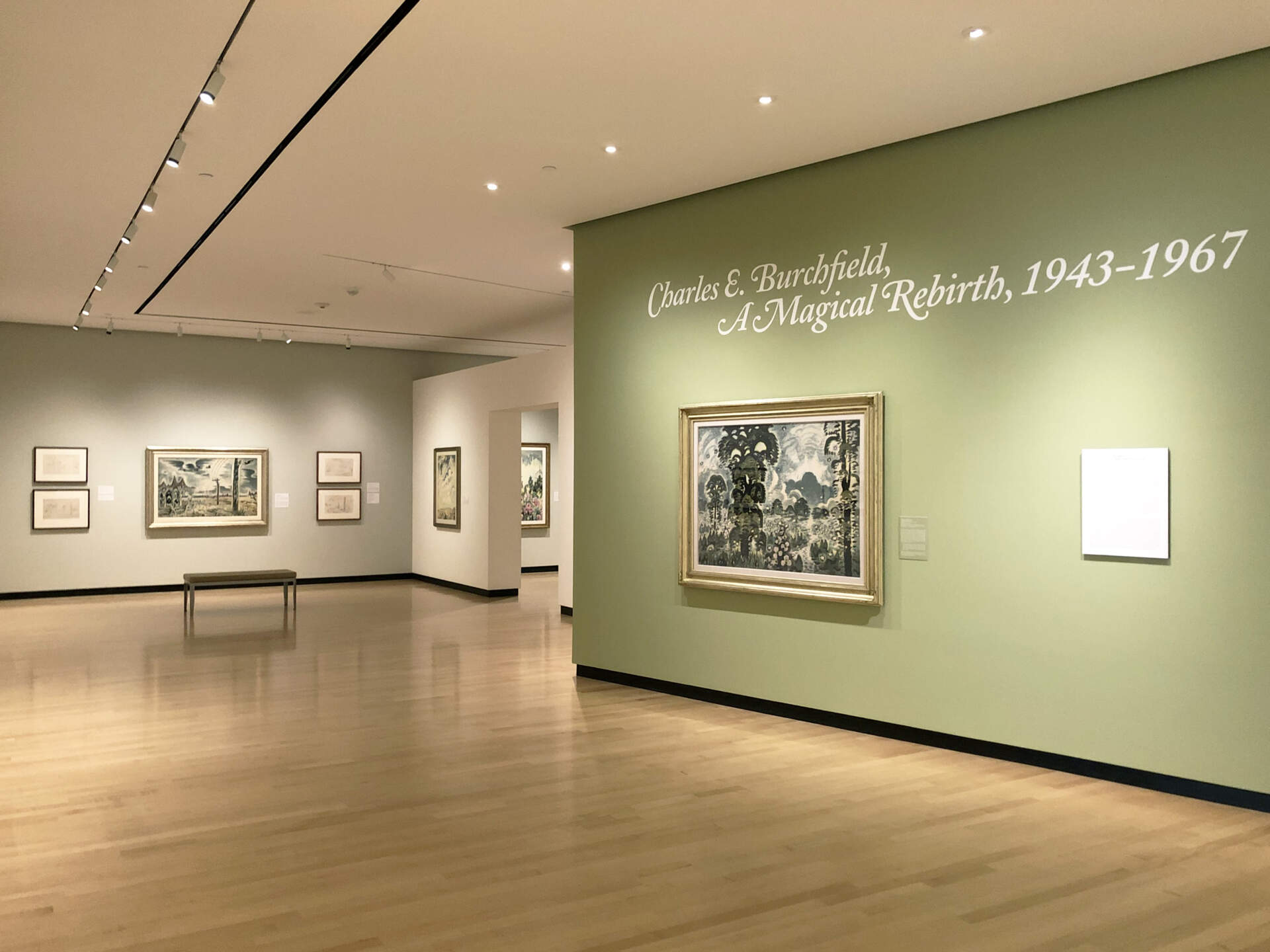
Charles E. Burchfield: A Magical Rebirth, 1943-1967
Past
Dec 13, 2019 - Mar 29, 2020
Charles Ephraim Burchfield changed the world of watercolor by creating the largest paintings ever achieved in the medium. Charles E. Burchfield, A Magical Rebirth, 1943-1967 celebrates the latter part of Burchfield’s career when he returned to nature as the primary subject of his paintings and resumed his youthful exuberance for experimentation. It was during this time that he began to expand many of his earlier works, started as early as 1917, by adding paper to the peripheries of the existing paintings, giving them new life, and creating his most dramatic and triumphant works. On view will be major late career paintings from public and private collections exhibited with paintings, drawings, studies, and notes from the museum’s prestigious collection and archives. Lenders include William and Rose-Marie Shanahan; The Butler Institute of American Art in Youngstown, Ohio; the Mead Art Museum at Amherst College in Amherst, Massachusetts; and the DC Moore Gallery in New York City, which represents Burchfield’s estate.
This exhibition is the third in a series of exhibitions presented at The Center that focus on different parts of Burchfield’s life. The first exhibition, Charles E. Burchfield, The Ohio Years, 1893-1920 was on view from December of 2017 until March of 2018. The second part of the series, Genius Loci: Burchfield’s Spirit of Place 1921-1943 was on view from December 2018 until March of 2019. This third exhibition, A Magical Rebirth, 1943-1967, examines how Burchfield’s ideas evolved as he constructed increasingly larger and more complex works to convey his rapturous vision of nature. The process started in 1943 when he re-conceived two similar paintings that portray the awakening of the earth with the transition from winter to spring: Two Ravines (1934-43) and The Coming of Spring (1917-43) in the collections of the Hunter Museum of American Art in Chattanooga, Tennessee and The Metropolitan Museum of Art in New York, New York, respectively. While both seminal paintings are too fragile to travel, the story of their development is demonstrated through studies and tracings.
Charles E. Burchfield, A Magical Rebirth, 1943-1967 offers a unique opportunity to see major works from other museum and private collections that rarely been shown. Among the masterworks are Song of the Telegraph (1917-52), a surreal depiction of nature-induced sounds about which Burchfield wrote: “There are few sounds that are as wild and elemental as the ‘music’ of the telegraph wires that stir the blood as much, and fill the listener, boy or man, with such vague but intense yearning for he knows not what.” Wild Sweet Peas in a Spring Rain (1961-65), appearing for the first time at the museum, is an evocative homage to the first few years of his life in Ashtabula Harbor, Ohio. He wrote that, “The vague memory of these flowers may be taken as the symbol of all the elusive memories of earliest childhood.” Viewers will be able to compare the loaned romantic painting, Moonlight in June (1961), to Fireflies and Lightning (1964-1965), which is among the greatest paintings in the Burchfield Penney Art Center’s collection, as they both conjure up a powerful memory from 1915 transformed into a mature vision of nature’s magnificence. Also premiering are expansion drawings and tracings, focused studies, and other items from the Charles E. Burchfield Foundation Archives, selected by Burchfield Scholar Nancy Weekly and Curator and Manager of Archives Tullis Johnson, who worked together to curate the exhibition.
This exhibition has been generously supported by the Charles E. Burchfield Foundation.